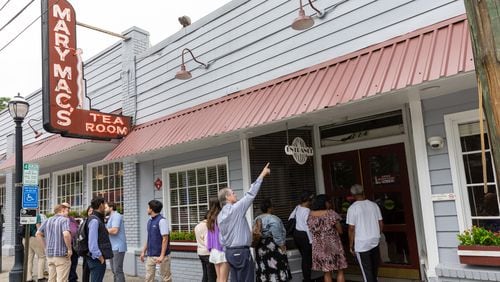A resident of north Cobb since 1992, John Morris received his M.A. in science, technology, and public policy from George Washington University and has spent the last 16 years designing and developing software for the retail industry.
Today, he writes about how the feds can really help Georgia schools.
By John Morris
Credit: Maureen Downey
Credit: Maureen Downey
Some would have you believe that in Georgia we are just a few new standards or a new curriculum away from excellence in education; that we just need to focus more on preschool education, emphasize STEM, encourage parent and community involvement and ensure college affordability.
There is nothing wrong with these ideas, but suggesting that such actions attack the problem at its root or that they alone can solve our education dilemma betrays a total lack of understanding of the fundamental challenge. That challenge is this: billions of dollars in state and local revenue just vanished when the recession hit in 2007.
That money never came back. Moreover, the reach of what revenue remains is further eroded by not only increasing enrollment, but also by rising health care and pension costs. The problem is not that we are not doing enough of the right things, after all we can’t even do what we use to do, it’s that we have a lot less money and ever-increasing costs.
When the recession hit in 2007, state and local tax revenues begin falling, not immediately, but within a year or so. Property values fell; folks were laid off; and people spent less. Reserves and a stimulus program propped up school revenues for a while, but when that money ran out, the schools finally felt the full weight of the shortfall.
Thousands of teachers were laid off; furlough days were added; salaries were cut; raises were delayed indefinitely; class sizes grew and grew; and state class size regulations became meaningless.
The recession finally ended in June of 2009, but Georgia’s revenue in 2014 continues to be substantially below what it was in 2009. Likewise, both Cobb and Gwinnett (the two largest districts in Georgia with a combined budget of $2.5 billion or more and 270,000 students) have yet to reach 2009 revenue levels after more than five years of recovery.
We cannot, however, look to the federal government to cover our revenue shortfalls. Aside from the fact that the federal government faces a massive deficit and is now carrying a $17 trillion debt, it just hasn’t contributed all that much to local education.
The federal government contributes only a small percentage of what is needed to educate our children in Georgia, only 6 percent for Gwinnett and 3 percent for Cobb.
Both Cobb and Gwinnett have experienced substantial increases in health care premiums. Henry has seen health care premiums for classified employees more that double since 2012. Furthermore, the employee and employer contributions to the Teacher Retirement System of Georgia have grown substantially since 2009.
Ultimately, what education needs most is a robust economy and manageable health care; given that, pensions will take care of themselves. The federal government does no one any favors by meddling in local education. We can handle that in Georgia. What we cannot do, at least not on our own, is create a robust economy and bring health care costs down.
Our federal government, however, seems to have forgotten that economic growth and education are tightly linked to one another, at least the part about robust economic growth funding education. They seem to have forgotten the cost of health care matters a lot in education.
We would all be better served if the federal government just focused on reducing economic uncertainty and lowered the cost of doing business rather than on education. Leave education to the locals. After all, we do pay for 95 percent of it.
All I’m saying is that a new education standard doesn’t amount to a whole heck of a lot when compared to the loss of billions of dollars in tax revenue. Really, it’s not all that complicated.







